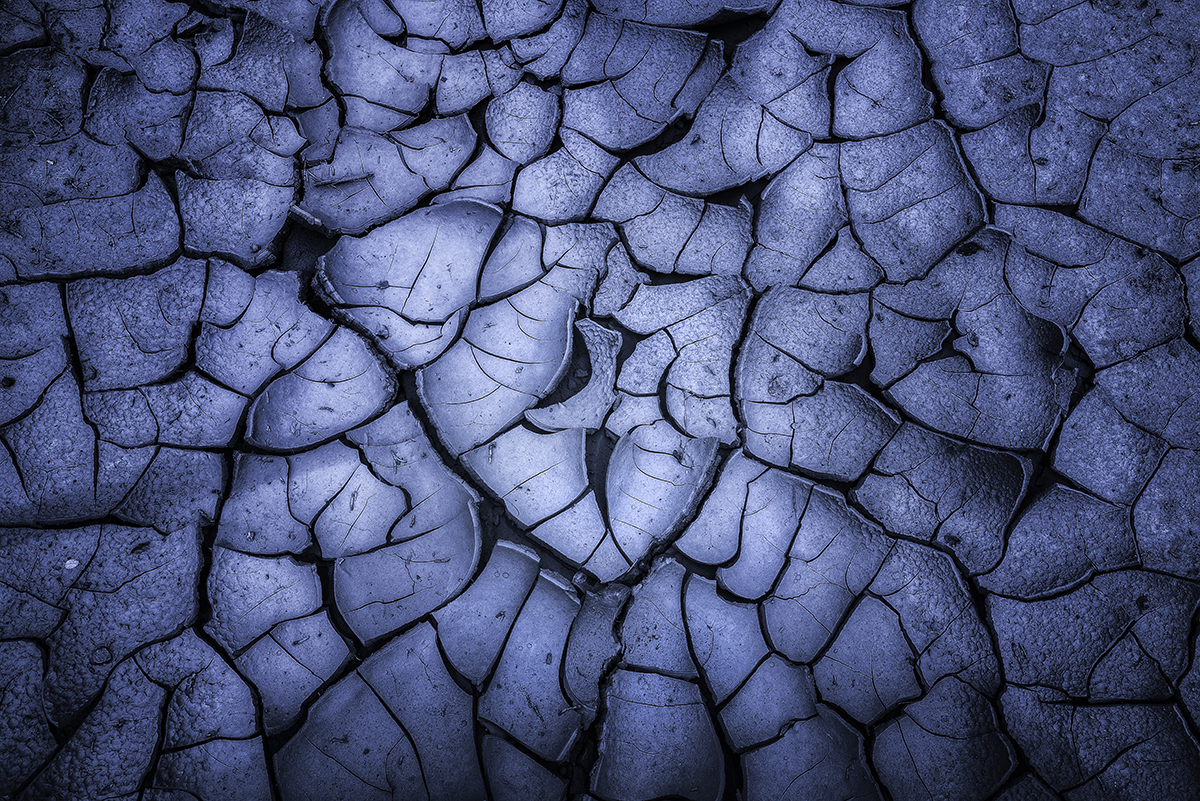Order Out of Chaos
Derek Sturman uses his Tamron SP 24-70mm VC G2 and SP 150-600mm VC G2 lenses to photograph fine-art landscape intimates.
Share the article:
More Photo Tips | Video Gallery | Photo Gallery | Enewsletter sign-up
By Jenn Gidman
Images by Derek Sturman
Derek Sturman’s foray into photography began on a camping trip seven years ago, when he picked up a DSLR and started experimenting with long exposures. The experimentation never stopped, and today the Utah photographer and videographer has turned his eye toward fine-art landscape “intimates,” focusing on the smaller details drawn out from larger scenes in front of him.
The Tamron SP 24-70mm F/2.8 VC G2 and SP 150-600mm VC G2 lenses are key to Derek’s creation process. “These two are my go-to lenses for capturing this type of photo,” Derek says. “I’ve used all kinds of lenses, and what I love about my Tamron models is their color rendition. When I’m shooting telephoto, I’m usually shooting in the shade, or at sunset or the golden hour, when the lighting can produce shadows and weird color casts. With my Tamron lenses, I don’t have those color-cast issues I’ve had in the past, which relieves me from a lot of time fixing them in post-processing. I also appreciate the F/2.8 maximum aperture on the 24-70, especially when I’m shooting in less-than-ideal lighting conditions.”
When Derek scouts for scenes to use in his intimates, he trains his eye to seek out the order within the chaos. “This type of photo can be particularly hard to compose in a way that’s visually pleasing,” he says. “My approach is to look for that one tiny element within the landscape that maybe no one else is paying attention to, then isolate it, highlight it, and enhance it.”
During his editing process, Derek tries to wrangle the colors and textures before him to best depict the scenes he’s photographed. “The camera never sees a place the same way you do,” he says. “Images often show up more saturated on camera than they were when you saw them in person. So that’s one thing I’m trying to master, because you have to use saturation to tell a story, especially with these type of landscape photos.”
Read on to see how Derek uses his Tamron lenses to produce his unique creations in the American Southwest.
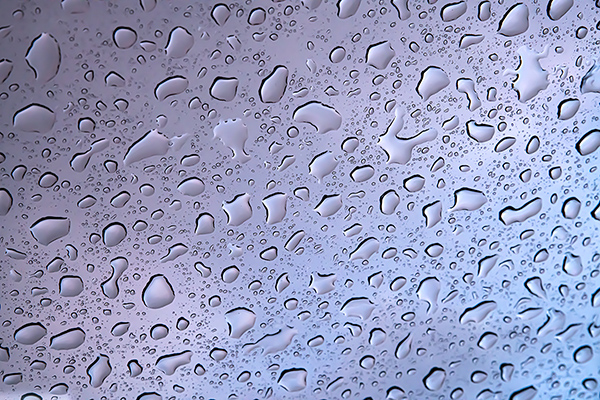
24-70mm (70mm), F/9, 1/50 sec., ISO 2500
Click image to view larger
I was flying my drone over a spot in Colorado to take photos of some eye-catching river formations when it started to rain. As I sat in my car, I looked up at the sky through my closed sunroof and noticed how the water drops had accumulated on the glass. It was around sunset, so I tried to position myself so I could balance the pink, purple, and blue in the photo as best as I could.
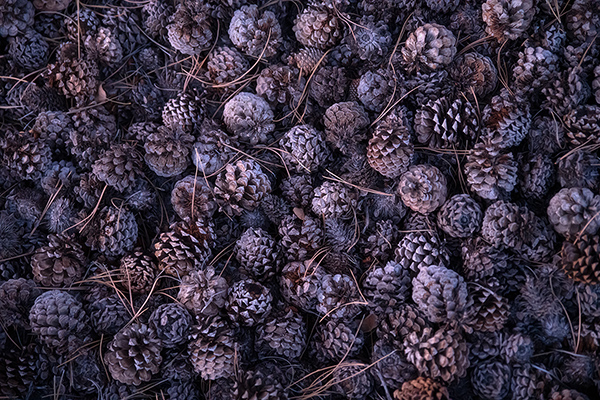
24-70mm (58mm), F/2.8, 1/30 sec., ISO 6400
Click image to view larger
I’d camped out in this part of Colorado for a couple of days, and when I got up in the morning to head out for picture-taking, there was one section of pinecones I had to walk across to get to where I wanted to go. As I was making my way over them, the sun started to come up. They hadn’t struck me as visually interesting until then, but as the light started hitting the different sections of the pinecones, I realized I had something. During post-processing, I tried to enhance those bright spots a bit.
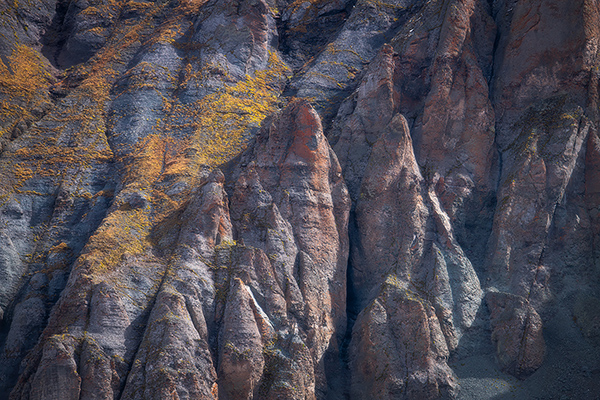
150-600mm (320mm), F/8, 1/160 sec., ISO 125
Click image to view larger
On these bizarre formations in Colorado, the peaks contain iron, so they usually exhibit colors of red or blue or green. The tundra changes color in the fall, which is why you also see the yellow here. I took this photo from my campsite, which was along a lake near Telluride. I’d wanted to capture a reflection of the formations in the lake, but it was too windy to get anything good. I decided to go the telephoto route instead, zooming in to the formations themselves to concentrate on the colors and other details.

24-70mm (66mm), F/4.5, 1/50 sec., ISO 320
Click image to view larger
The Badlands of Utah is a dry, eroded region with plenty of landscapes like this. This photo was taken right before sunrise, with me looking down into a basin from a cliff, and what I remember most is how cold it was. You can’t fully tell from this photo how massive this area is. If there’d been a person down there, you probably wouldn’t have been able to tell it was even a person. During the editing process, I brightened the photo up a bit, since it was taken during the blue hour. The only other tweaks I made were a bit of noise reduction and sharpening to accentuate the texture of the landscape.
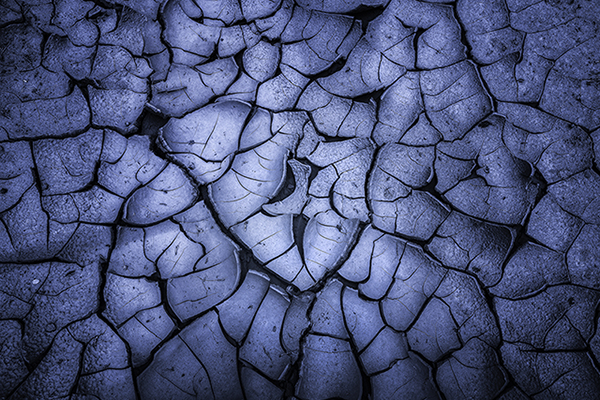
24-70mm (30mm), F/18, 1/30 sec., ISO 64
Click image to view larger
This photo was taken near Goblin Valley State Park in Utah, in a section of wash off the side of the road where the mud had baked in the hot sun. I spent about 20 minutes trying to come up with a composition—that whole order-out-of-chaos thing I mentioned earlier. I finally decided to center on that heart like shape in the middle of the frame. I did a lot of post-processing on this image. I was trying to sharpen certain parts of the image, but not too many, and I used a good amount of vignetting. The highlights were also almost blown out, so I spent some time trying to bring them down as well.
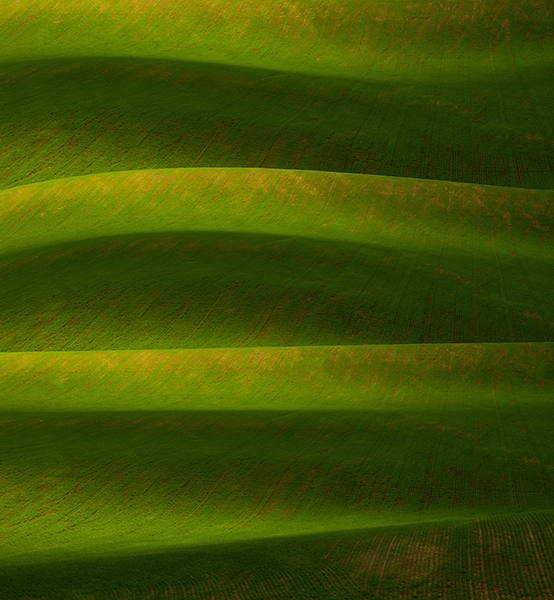
150-600mm (160mm), F/6.3, 1/1250 sec., ISO 500
Click image to view larger
I used to visit family in Idaho when I was a kid, and there was this one area with never-ending hills. It’s funny when you go back to a place to photograph it, trying to recapture what you remember, because it’s never exactly the same. It took me about three days to find a spot where I could fit all of these hills in one frame. The sun cooperated with me that day, too—thanks to the clouds, the sunlight was intermittent, so whenever the clouds would roll overhead, I’d get these varying light and shadow patterns, which made the photo look even cooler.
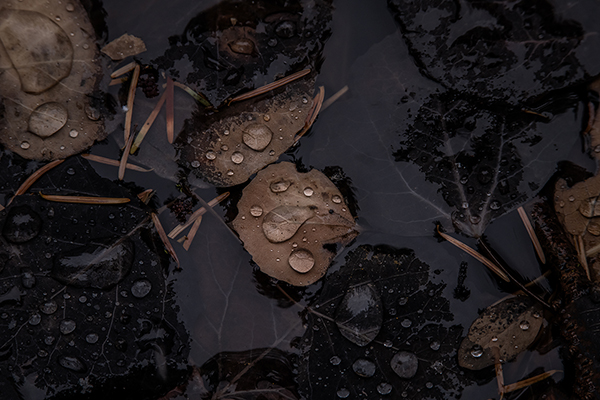
150-600mm (600mm), F/11, 1/125 sec., ISO 1000
Click image to view larger
I took this photo at a campground I often visit, where there’s a tiny stream that collects all of the leaves fallen from the aspen trees and carries them downstream before it ices over in the fall. On the day I visited, the leaves were no longer their brilliant autumn colors, and the ice had mostly melted. I do some real estate photography, and the black and orangish-brown color scheme here reminded me of a contemporary home. I didn’t know leaves could even turn black like this.
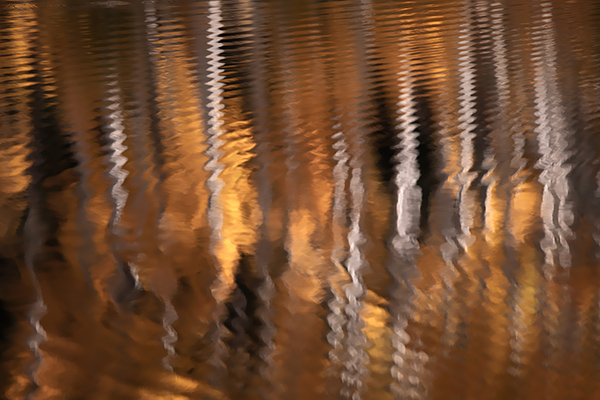
150-600mm (420mm), F/8, 1/80 sec., ISO 125
Click image to view larger
One popular destination for photos is Colorado’s Rowdy Lake, where the fish create these amazing ripples. Photographers often go to take pictures of the reflections of the white aspens along the shoreline, set against the blue sky, but I wanted to do something different. I was able to capture this photo of sunlight shining directly on the aspens. It reminds me of metallic copper. I had to work fast—when a fish would make a splash, the ripples would disappear quickly. I had to immediately zoom in to that spot and try to capture the ripple at its most intense.
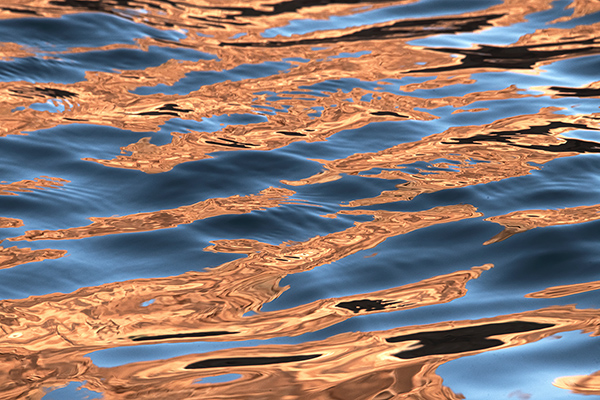
150-600mm (600mm), F/18, 1/320 sec., ISO 1000
Click image to view larger
Lake Powell is the nation’s second-largest reservoir, located along the Colorado River. Whenever I visit there, I notice that the Jet Skis and other activity on the water create these wild textures. And so I made a special trip there just to photograph this type of scene. To capture a photo like this, you have to be next to one of the canyon walls when there’s direct sunlight shining down the canyon wall. Then, as the rough water dies down, you wait for just the right moment when these reflections start happening.

150-600mm (340mm), F/10, 1/1000 sec., ISO 1600
Click image to view larger
Yellowstone was the only national park I visited when I was a kid. Interestingly, I never have much interest in photographing the wider landscapes there. I’m drawn to the abstract scenes instead—peering down into the hot springs, for example, you can catch a glimpse of so many brilliant colors and textures. For this photo, I hiked to an overlook overlooking the Grand Prismatic Spring at sunset, focusing on these lines and textures and trying to just grab as many shots as I could.
To see more of Derek Sturman’s photos, go to https://sturmanphoto.smugmug.com and his Instagram.
More Photo Tips | Watch Videos | Learn More About Tamron Lenses | Photo Gallery
